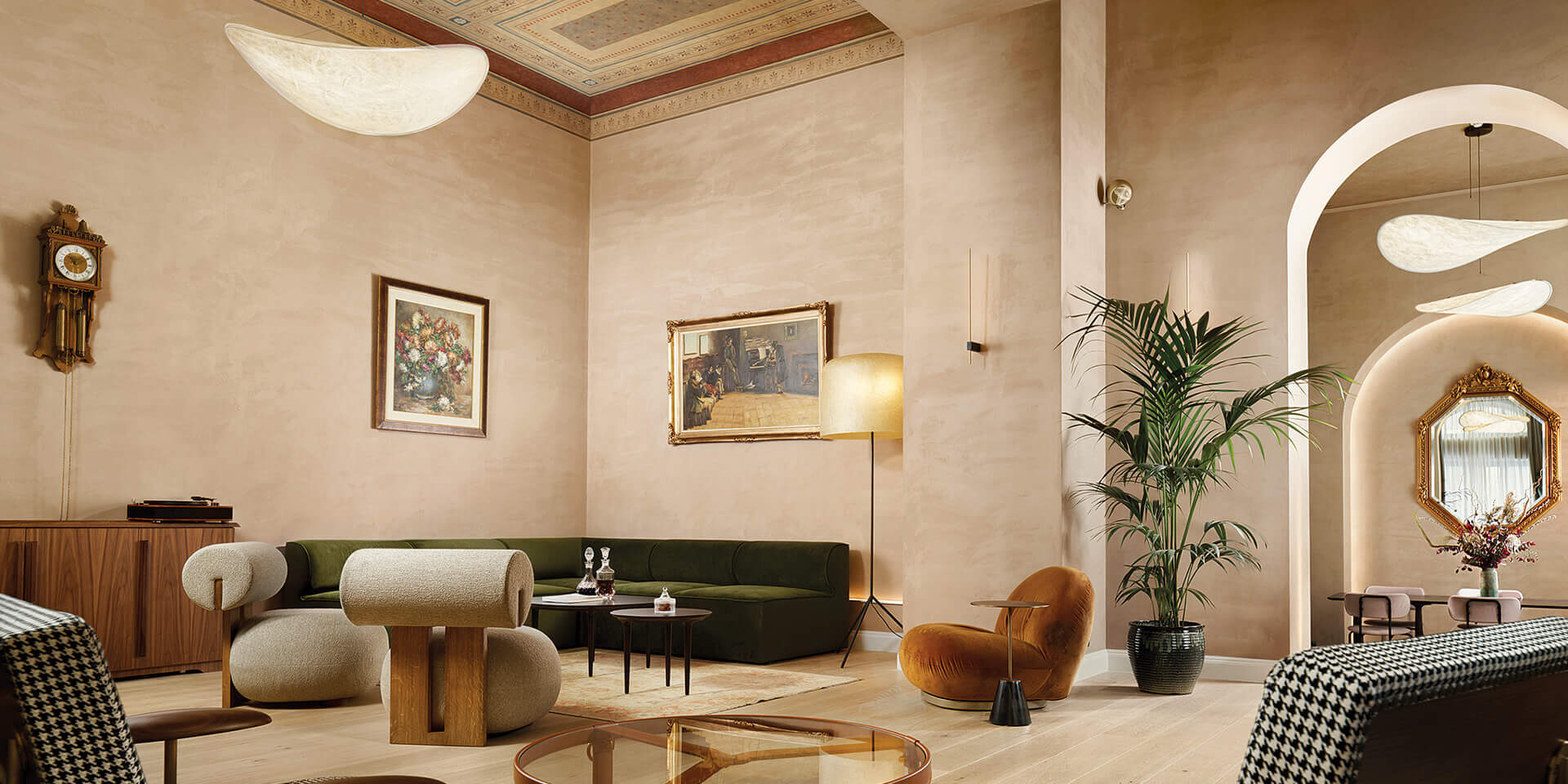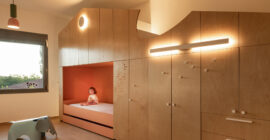Historical stratification
The restoration of the listed building by E. Ziller and its transformation into a hotel offered an opportunity to examine the architectural dialogue between new and old. At the core of the design process was the question of how the new interior layer could be articulated with clarity against the pre-existing structure so that the historic elements would remain visually and conceptually prominent.
Renovation Strategy
A single gesture within the renovation encapsulates the overall design intent. On the second floor, along the perimeter of the gypsum ceiling decoration, the project’s conservator removed a small section of the later white paint to reveal a rectangular fragment of the original, richly coloured ceiling painting beneath. This intentional “witness” preserves both the authentic layer and the later intervention, making visible the shifting aesthetic preferences of the neoclassical home’s former inhabitants.
This carefully curated “peeling”, creates a momentary opening into the past, exposing successive historical layers with clarity. Across the entire project, the distinction between new and old was primarily expressed through two elements: the axial layout and the ceilings.

Functional Layout & Materials
The original plan organized the rooms axially, with tall double doors allowing them to interconnect. This configuration was carefully preserved, as was the fundamental rhythm of the rooms. New bathroom spaces were positioned alongside the axial circulation and were designed as freestanding boxes that do not touch the painted ceilings. Clad in mirror, they visually recede, doubling the perceived volume and reinforcing the separation between old and new.
Most rooms in the neoclassical building featured colored ceiling paintings of high artistic value, though many showed signs of age – repairs, cable routes, cracks, and areas where the lath-and-plaster substrate was exposed. The conservator restored the damaged sections by extending the original artwork in full, while deliberately maintaining a light patina acquired over time. Crucially, the aim was not to produce a flawless, freshly painted ceiling.

Finishes & Custom Elements
In other words, the intention was not to create the impression of a ceiling that could have been painted “yesterday,” as is common in some Byzantine church restorations. A similar conceptual reference to the neoclassical façade was made on the ground floor, within the hotel’s shared spaces. The façade, unusual in that it faces three streets, features a distinctive arcade, which inspired the arched configurations of the high-ceilinged interiors.
The preserved architectural elements guided the colour selection for each room. By taking cues from the ceiling artwork, the wall finishes were chosen accordingly, while contemporary furniture was introduced – pieces that do not attempt to replicate the past, but instead establish a respectful dialogue with the neoclassical shell.






